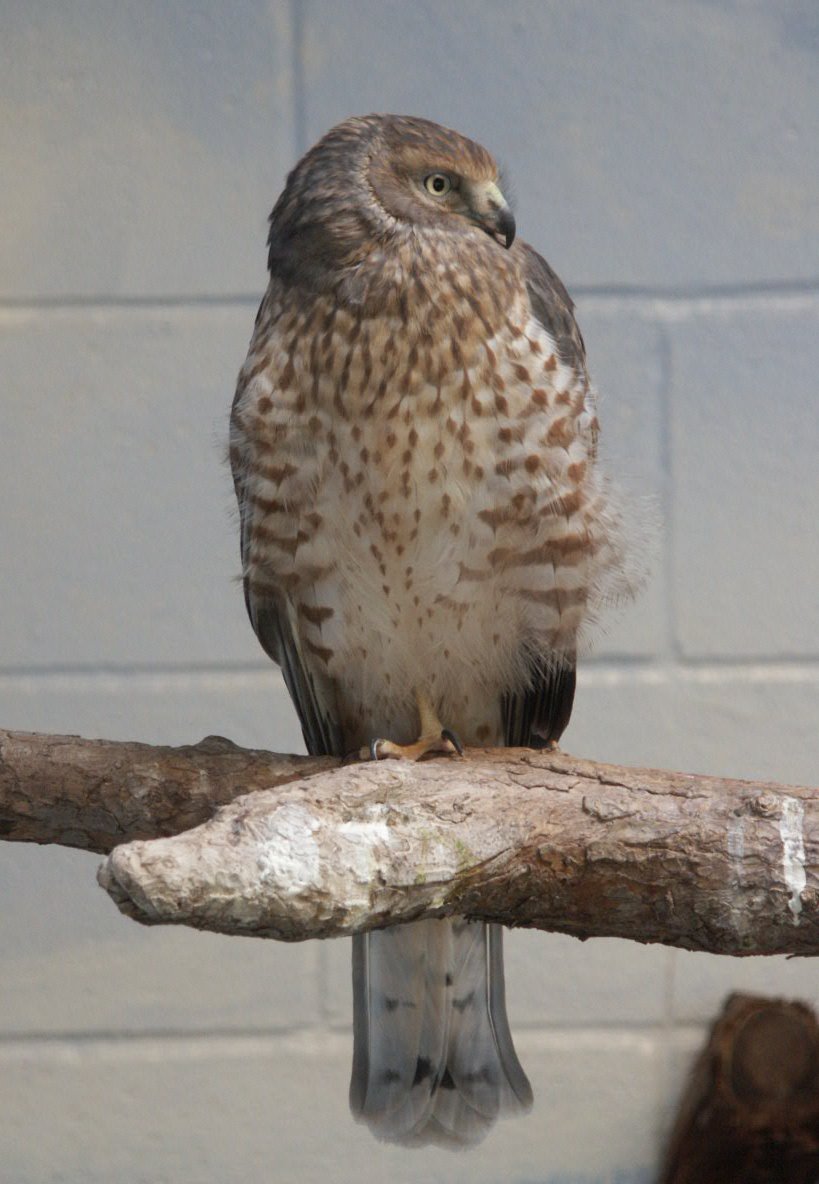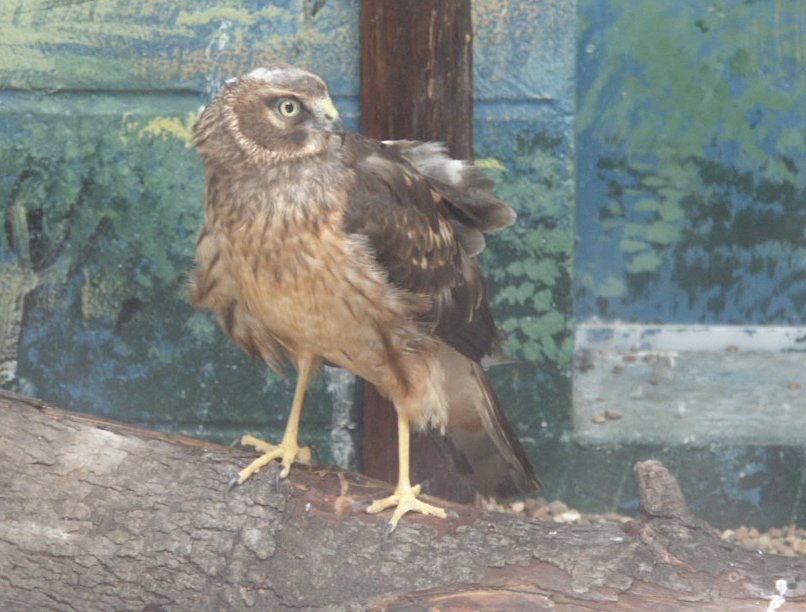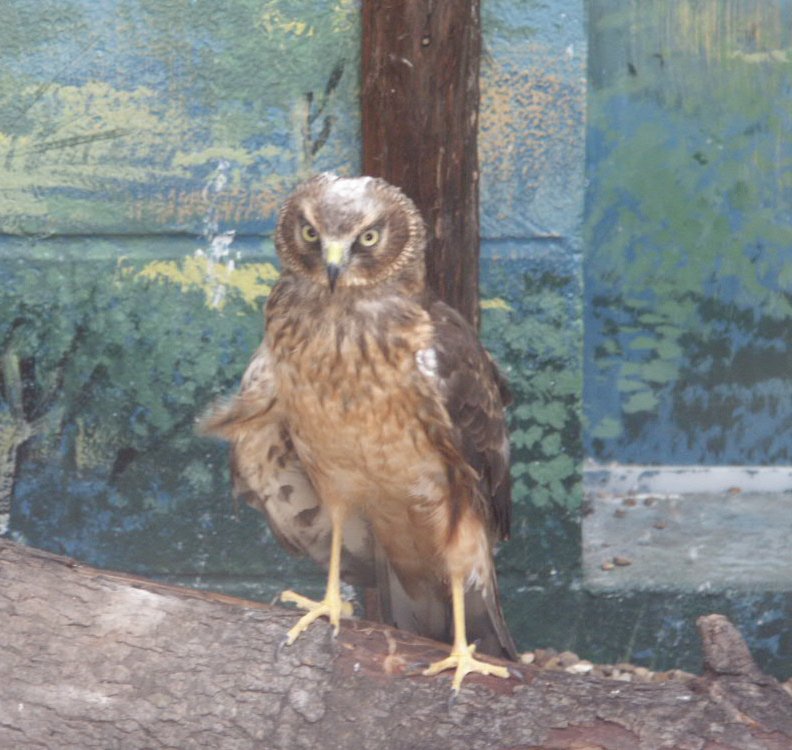
The Northern Harrier is a slender bird with long wings, a long tail, yellow legs, an owl-like facial disk, a conspicuous white rump (that shows easily in flight), and yellow eyes. Its wing span is 44 inches wide and the bird is between 17-24 inches in length.
Depending on the region, some adult males have blue-gray upper parts or range from light gray to dark gray. The under part of an adult hawk is white and has a darker wing tips than the female. The female has a brown dorsally and streaked with brown ventrally and light buffy below. The females are larger than the male hawk. The juveniles resemble the female, but are more brown and more reddish below.
The male Northern Harriers are polygamous, but during the mating seasons the male helps each female separately in her nest. The females built their nests on the ground using dry sticks, straws, weed stems, and grass. The nests are built by shrubby ground or near swamp. The male gathers the material for the nest, dropping material from above to the female. The harrier would make a loud scream, kee-kee-kee: kek, kek, kek, when someone disturbs her or is near her territory.
The harrier's owl-like facial appearance is due to the presence of "filo feathers" that facilitate acute directional hearing. This is useful for crepuscular (twilight) hunting as well as diurnal (daylight) hunting. It can also be useful for locating prey in areas of higher vegetation (grasses and marshes) where vision is somewhat limited. The northern harrier has a flight of speed of 24- 38 mph, which includes flapping and gliding. It usually flies low over the ground, about 10-30ft. up. The northern harrier flies in a pattern of a few wing beats followed by a short glide, wings held slightly up in a V shape, then drops quickly to its prey.

Young males have as few as one mate, while older males may attend to as many as four mates. The male tends to the nest that each of his females has established. Their nests are formed from grass, weeds, and reeds that are set in the ground or in bushes. Mating season is in spring. A female would incubate from four to seven eggs in her nest (commonly five eggs), for about 32 days. The eggs are pale blue in the beginning, then slowly turn to a dull white color, sometimes with spots of brown. The male is responsible for bringing food to the nest, but it is the female that will feed the young. After the eggs hatch, the female stays in the nest for up to six weeks, while the male leaves within five weeks.
There is presently one male juvenile at the zoo at the age of one year old. Even in a close area the juvenile acts like other hawks in the wild. The juvenile has his head down as though he is hunting for food. Northern Harriers are found throughout North and Central America.

E-mail: hphan@rammail.txwes.edu
Sources and Links:
Texas Park and Wildlife Nature. Wildlife Fact Sheets. http://www.tpwd.state.tx.us/nature/wild/birds/harrier.htm
Triffo photo 3. Northern harrier gallery II . http://triffophoto3.tripod.com/tpo/id3.html
Birds of Nova Scotia. Eagles, Hawks, and Falcon. Northern
Harrier.
http://museum.gov.ns.ca/mnh/nature/nsbirds/bns0087.htm
John K. Terres. The Audubon Society Encyclopedia of Northern American Birds. ed 1st . 1980. Alfed A. Knopf : New York.